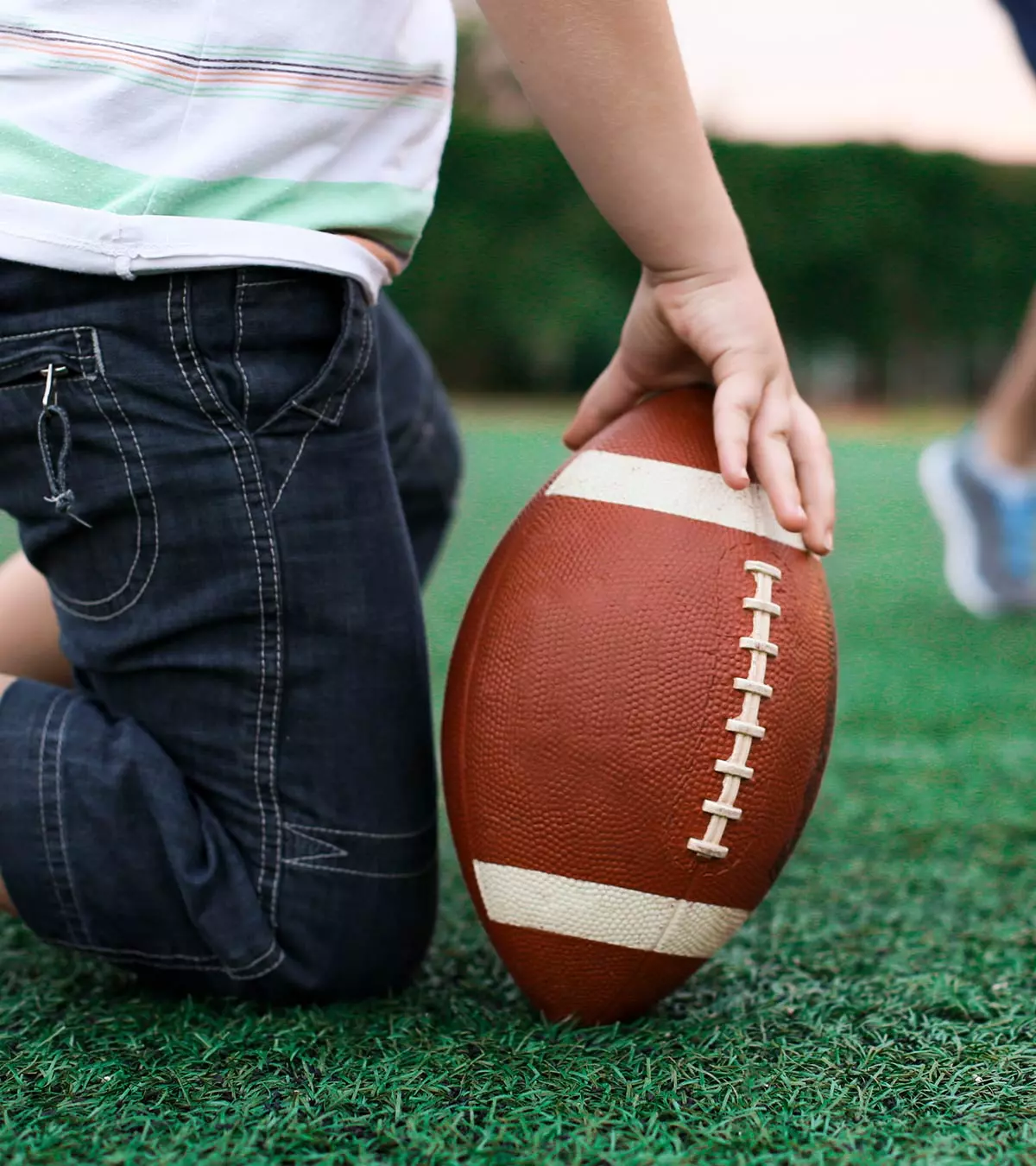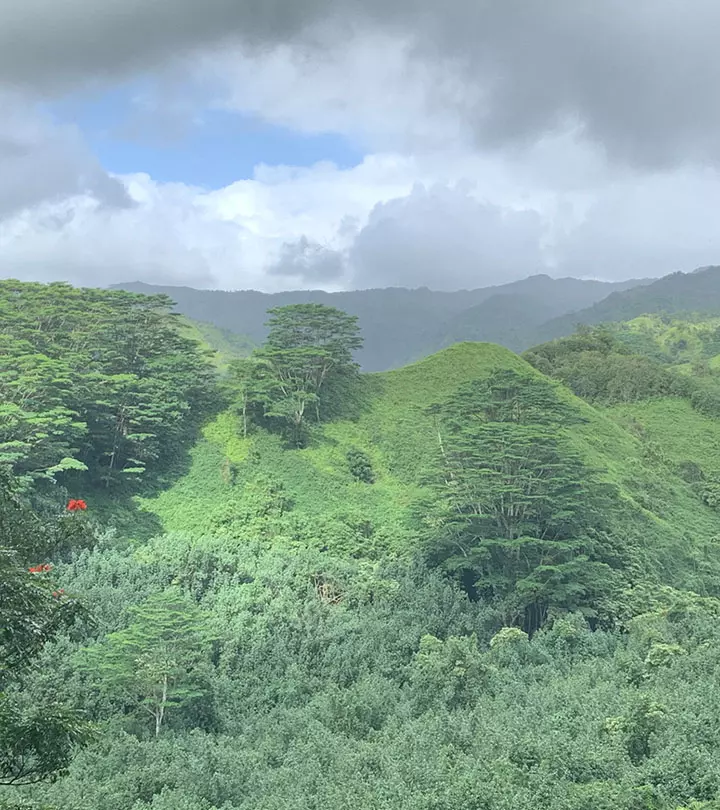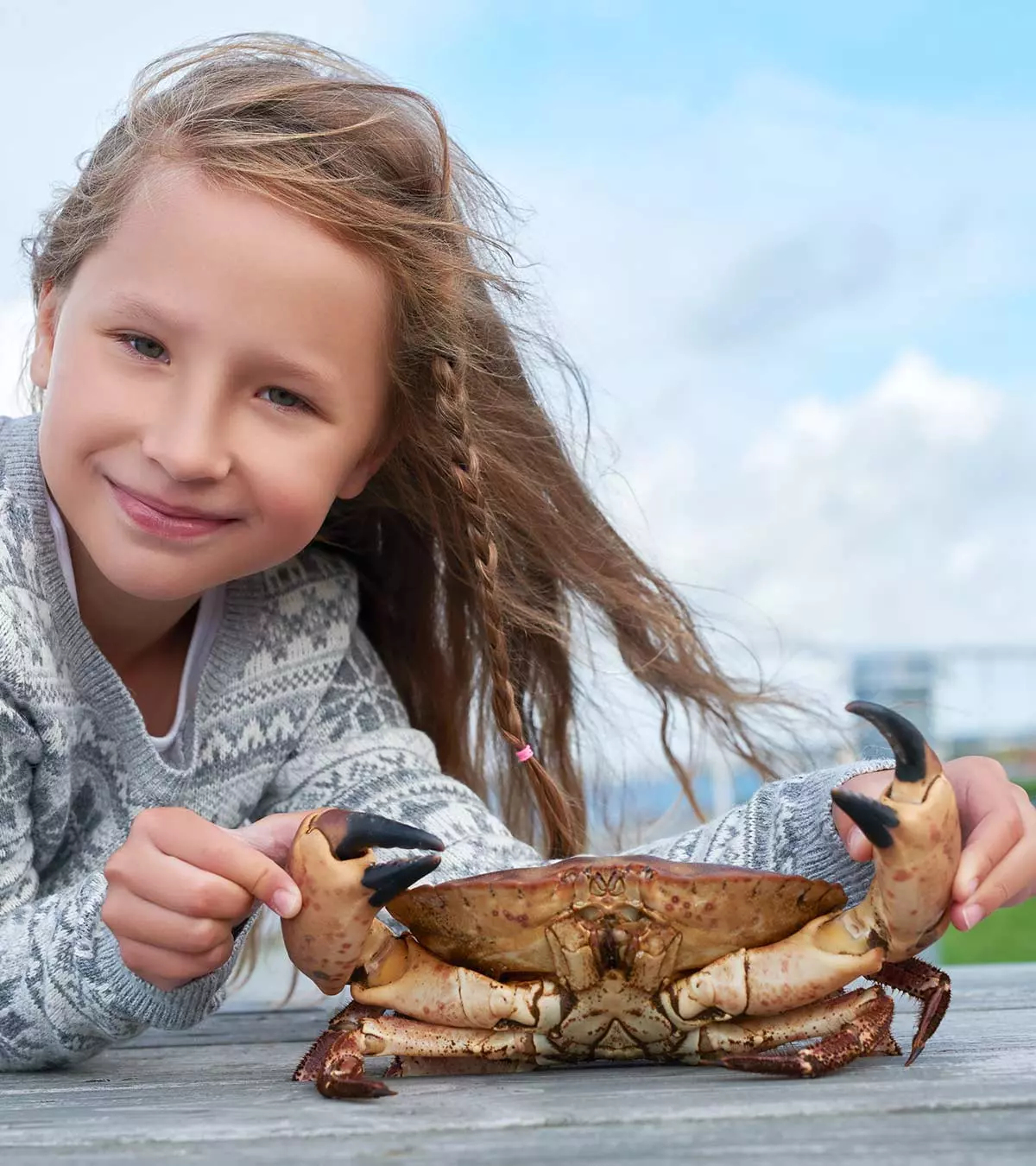
Image: ShutterStock

Are you in search of some fantastic crab facts for kids? If Sebastian from The Little Mermaid attracts your child, you might want them to learn a few interesting facts to help them expand their knowledge about this water animal. To help you with that, we have compiled some great facts about crabs for children and preschoolers that would satiate their curiosity.
Key Pointers
- Crabs are crustaceans, which are a subphylum of arthropods.
- Some crabs are capable of laying and carrying up to one million eggs simultaneously.
- Crabs feed on algae, mollusks, worms, and crustaceans.
- Hermit crabs are named for carrying a shell on their back, providing shelter for their delicate underbellies.
- The Japanese Blue crab is the most widely fished and consumed crab species worldwide.
Amazing Crab Information For Kids
1. What Are Crabs?
Crabs are crustaceans, a subphylum of the arthropods. Arthropods are invertebrates with an external skeleton, which gives them a hard exterior. The thick exoskeleton or the external skeleton offers these shellfish a tough look.
Male and female crabs differ in size, shape, and color. A major difference between a male and female crab is the anatomy of their underside – the male crab has a pointy apron while the female has a rounded apron.
While there are many animals with the term crab in their name, not all of them are true crabs. Interesting, isn’t it? Keep reading to learn more science facts for kids about crabs. Here is some more information about a crab’s anatomy.
- Crabs have ten legs and are referred to as decapods. Like spiders, crabs also have legs that can bend at the joints.
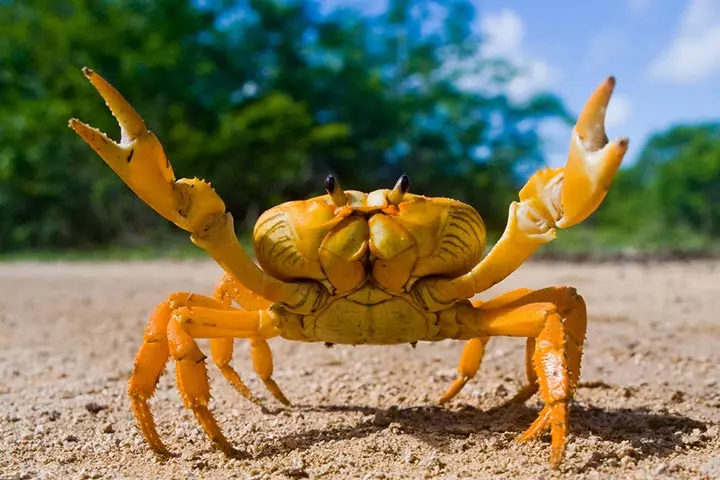
Image: Shutterstock
- The front two legs of the crab are usually called claws and are not used for locomotion. The claws are also called pincers, and can be big in some crabs. Swimming crabs use the hind legs as paddles to move when in water.
- Male crabs usually have blue colored claws, while female crabs have red colored. The distinct red color makes them look like they have applied red nail polish!
- Crabs have their eyes on the stalks, which enables them to see around even when they are under water or a rock, or in their burrow. Their eyes are made of hundreds of little lenses.
- A crab’s abdomen is under its main shell, unlike a lobster which has its abdomen on the back. They also have modified appendages called maxillipeds that are used for feeding.
- Most crabs have flattened bodies, allowing them to pass through narrow crevices and underwater pathways to escape predators or crab traps.
- A crab lice is a parasite that feeds off humans, and is usually found in pubic hair.
- Some crabs can lay and carry up to a million eggs at a time. Crab larva are tiny, the size of a head of a sewing pin.
- Crabs work together to gather food and protect their families.
- Crabs can get affected by a dangerous parasite called the sacculina, which can castrate the crab and make it incubate its eggs. Crabs with this parasite don’t get enough nutrition and eventually die.
 Quick fact
Quick fact2. What Do Crabs Eat?
These scavengers are omnivores and eat both plant and animal matter. They feed on different types of algae, worms, mollusks, and other crustaceans (including crabs). Different types of crabs have different food habits, which are mostly dependent on the environment and the kind of food they can get. For example, saltwater crabs feed on baby turtles and even carcasses of birds and other sea animals washed up on the shore.
Crabs use their pincers to hold the food or prey, tear small pieces of it and move into the mouth. Some species of crabs can filter the food in water using the setae, which is a stiff hair-like structure.
3. Where Do Crabs Live?
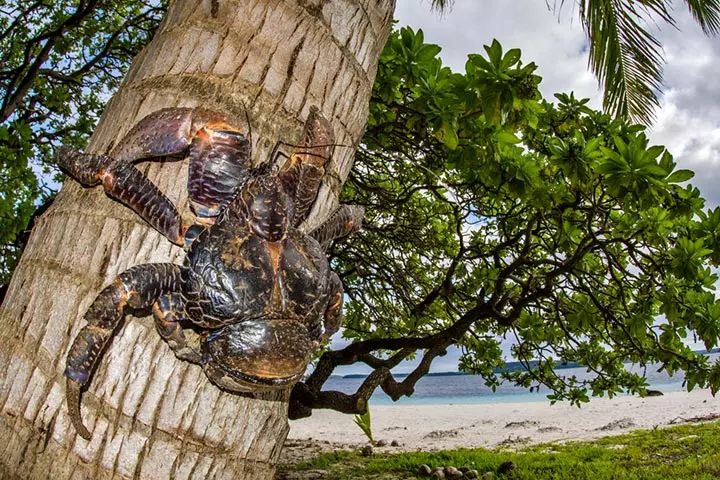
Image: Shutterstock
Crabs usually live in water bodies including oceans, rivers, freshwater and saltwater lakes. Most crabs prefer living in freshwater bodies. Certain species of crabs can also live on land, especially in tropical regions, and some like the Coconut crab or the Robber crab can also climb trees. The Coconut crab is the largest arthropod and a land crab. A group of coconut crabs can even break open a coconut!
4. Different Species Of Crabs
There are over 6,700 different types classified into 93 families. Around 4,500 species are known to the man. Of them, 850 varieties are semi-terrestrial and freshwater crabs. Unfortunately, a few species of freshwater crabs are under the threat of extinction due to human activities. Here is a list of the most popular species of crabs known to humankind.
- Hermit Crab
- Coconut Crab
- Horseshoe Crab
- Japanese Spider Crab
- Blue Crab
- King Crab
- Snow Crab
- Fiddler Crab
- Rock Crab such as the Pacific rock crab
- Dungeness Crab
In addition to these, you can also find a few unique-looking crabs like the
- Masked Crab – body that resembles a human face)
- Raspberry Crab – that’s right, its body is in the color and texture of a raspberry
- Orangutan Crab – has thick brown hair like an orangutan
- Gaudy Clown Crab – one of the smallest species, the Gaudy Clown Crab is cute and colorful (remember Nemo?)
- Teddy Bear Crab – has a lot of fur like a cuddly bear
- Arrowhead Crab – as the name suggests, has long, sharp legs and a body that resembles a small guitar.
- The Pom-Pom or Boxer Crab – has an anemone in the middle of each claw, making it look like it is holding a pom-pom.
Interesting Facts About Crabs For Kids
Do you know how big ‘the biggest crab’ is? Does the ‘Flying Crab’ really fly? Read the most interesting facts about different crab species here.
5. Hermit crab facts for kids

Image: IStock
The Hermit crab is a small-sized crustacean, but not a true crab. It has a snail-like appearance and is found in oceans around the world.
- There are 500 different varieties of the Hermit crab.
- The Hermit crabs are so called because they carry a gastropod shell on their back, which acts as a shelter for their soft underbellies. The shell that these crabs carry is not their own but is salvaged from other animals.
- They are found in different marine environments, from shallow waters to deep seas where there is plenty of food and space to hide.
- The Hermit crabs come in different sizes – they can be as small as half-inch or as big as 16 inches.
The mother of Tic Tac Toy Family, a family-run YouTube channel, reveals that it took some research and input from her children and their teacher before finally adopting a pet hermit crab. She says, “Her (daughter’s) teacher talked up how fun hermit crabs were and how easy they were to care for. And Maya (daughter) kept talking about it and asking about it. So finally, I did some research myself and thought, you know what? Maybe we can handle some hermit crabs (i).”
6. Coconut Crab Facts
The Coconut or Robber crab is the largest land-living arthropod in the world. Also known as the palm thief, Coconut crabs are carnivorous and can weigh up to 4kg.
- The claws of this crab are not strong enough to break open a coconut. It often throws the coconut down from the top of the tree to break it.
- It has a keen sense of smell and can detect the presence of food from a distance.
- It is not yet an endangered species, but the number of Coconut crabs is dwindling.
7. Horseshoe Crab Facts
The Horseshoe crab, also called the King crab, is a crustacean but not a true crab. It belongs to the family of arachnids like scorpions and spiders. Horseshoe crabs live in warmer climates and are found in India, Indonesia, Japan, the Gulf of Mexico and the eastern US.
- The Horseshoe crab has a thin tail that it uses for navigation when swimming.
- It breathes through book gills, which are on the abdomen.
- Horseshoe crabs are carnivorous and nocturnal. Owing to their hardened shell, they have few predators.
- Horseshoe Crabs are often used as bait in crab nets. In recent times, studies have found that their blood contains amebocytes, which can be used in detection of bacterial endotoxins during medical procedures in humans. This has led to a decline in Horseshoe crab numbers in certain regions.
- Female Horseshoe crabs lay anywhere between 60,000 and 120,000 eggs at a time.
8. Stone Crab Facts
Stone crabs are usually found in the northwest regions of Florida and along the Gulf of Mexico to the Mexican state of Tamaulipas. Stone crabs are usually found near the shore and in estuaries.
- Stone crabs are usually considered to be right-handed, which means their stronger or crusher claw is on the right.
- These crabs can regenerate their claws, so fishermen usually take the claws and leave the crabs back in the water while crabbing.
- A Stone crab has a crushing force of 19,000 pounds per square inch, which is perhaps why they consume mollusks.
- The Gulf Stone crab is usually a shade of maroon brown while the Florida Stone crab can be spotted or striped.
9. Fiddler Crab Facts
The Fiddler crab is a yellow crustacean that keeps itself always busy. It is usually digging, eating, mating or running around – there is never a dull moment in the crab’s life.
- The Fiddler crab is careful and dainty and has neater eating habits than other crabs.
- They enjoy digging pits in sand, where they sleep and hide from predators.
- A male Fiddler crab has a tiny claw and a crusher claw but can eat only with its tiny claw.
 Quick fact
Quick fact10. Sand Crabs Facts
Sand crabs are also known as White crabs that can be found along the sandy shores of the US and Brazil.
- The crab has a pale, sand-like body color that makes it almost invisible on sandy beaches, which also gives it the name Ghost crabs.
- Sand crabs are nocturnal and have large eyes that give them a wide field of vision.
- Male Sand crabs have horns on top of their stalks, above the eyes.
- Female Sand crabs scatter the sand in all directions when they create a burrow, while male Sand crabs neatly arrange the dug up sand next to their burrows.
11. Blue Crabs Facts
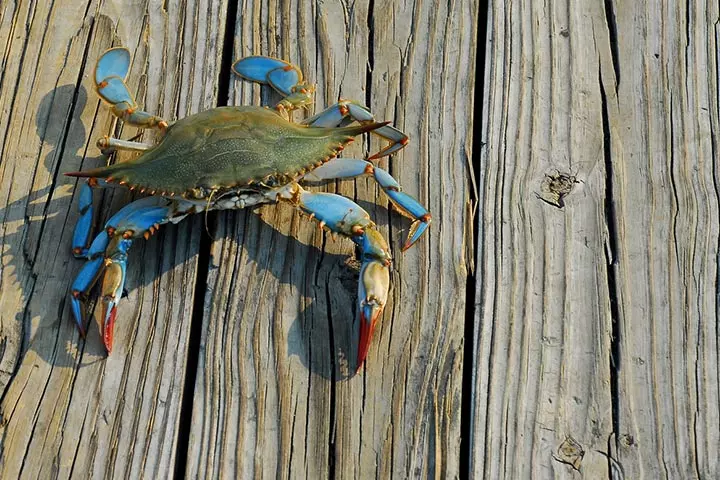
Image: IStock
The Blue or Chesapeake Blue crab is a native of the Atlantic shores. They have striking blue claws with olive carapace.
- The scientific name of Blue crab is Callinectes Sapid, which means a beautiful, savory swimmer.
- Blue crabs are bottom dwellers and are prickly, which makes them use their pincers often.
- Female Blue crabs mate only once in their lifetime.
- Blue crabs are sensitive, and any change in the habitat or environment can affect them easily, which is why their numbers have been on the decline in the recent past.
And the chart below will help you understand the peaks and drops in blue crab commercial landings in the US. In the 1950s, blue crab landings were around 100 million pounds per year which rose to 150 million pounds per year over the next two decades. This figure continued to fluctuate over the following decades. The Deepwater Horizon oil spill in 2010 impacted oceanic life as commercial landings of blue crabs saw a drop in the subsequent years.

Commercial blue crab landings in the US (1950-2025)
Source: U.S. Commercial Blue Crab Landings, Dockside Values, and Wholesale Prices; Mississippi State University/NOAA Fisheries12. Red King Crab Facts
One of the larger species of crabs, the Red King Crab or Alaskan king crab, is a dark burgundy-colored crab found in Japan, British Columbia, Australia and New Zealand, Argentina, and Chile.
- King crabs have fan-shaped tails tucked under the shell.
- These crabs use the first two legs as claws and the next three pairs of legs for locomotion. The last pair is usually used by the females for cleaning their embryos while males use them to transfer sperm to the female.
- The Red King crabs can grow to have a leg span as big as 1.8 meters, or 5 feet 11 inches.
- It is an expensive crab but not easy to catch. The crab turns red after it is cooked, which gives its name.
13. Decorator Crab Facts
Decorator crabs are found in the Kelp forests, which are underwater areas rich in the seaweed kelp.
- Decorator crabs select pieces of seaweed from their surroundings and prepare a camouflage to blend with the environment and hide from predators.
- These crabs remove and use the decorations like a weed, sponges and other camouflages on the new shell.
- Decorator crabs can be very colorful, depending on the camouflage they have on their shells.
- Decorator crabs have teeth within their abdomen, which make it easier to crush food.
14. Green Crab Facts
The Green Crab or mud crab is native to the Baltic Sea and the North Sea. The carapace is usually a shade of green, but it can also be dark brown with granular spots of yellow.
- Green crabs are aggressive and fight quickly when compared to other species.
- These crabs can rotate its claws to defend itself from predators that attack from behind.
- The Green crab is dubbed ‘the cockroach of the sea’, for being somewhat indestructible.
- These crabs have five “teeth” behind each eye. They have a huge appetite and eat anything they come across.
15. Pea Crab Facts
The Pea crab is the smallest species of crabs with the body size of just 0.75 inches. The crab is as small as a pea, which is why the name.
- The Pea crab lives as a parasite inside clams, oysters and other mollusks.
- The female Pea crab usually has a transparent body showing the organs inside.
- Pea crabs depend completely on their hosts for oxygen, food and safety.
16. Mole Crab Facts
Mole crabs are burrow animals and live in pits they dig in the wash zones along the shores of Africa, the US and Australia.
- Mole crabs have a barrel shaped body, which allows them to roll along with the currents.
- It can bury itself completely in just 1.5 seconds, to be safe from predators.
- Female mole crabs can reproduce only during their first year. The eggs of these crabs are orange in color.
17. Sea Crabs Facts
As the name says, sea crabs are species that live mostly in the sea. There are over 5,000 different types of crabs, which live in the salty waters of oceans and seas around the world.
- The Coconut crab, Japanese Spider crab, Red crab, Yeti crab, Fiddler crab, Horseshoe crab, Hermit crab, and Blue crab or Chesapeake Bay crab are all examples of sea crabs.
- Almost 20% of marine creatures caught by humans for consumption are sea crabs. Around 1.5 million tons of crabs are caught for consumption every year.
- Crabs are also known as ‘spiders of the sea’.
- Sea crabs live in a variety of places when compared to other sea animals. They live even in volcanic vents and under the ice in the Antarctic.
Did You Know?
- The biggest crab in the world is the Japanese Spider crab. It is also the arthropod pod with the longest leg span, reaching up to 3.8 meters or 12 feet! The Japanese Spider crab can weigh up to 19kg.
- The shell of a crab or the exoskeleton is primarily made of calcium carbonate.
- The Japanese Blue crab is the most widely fished and consumed species of crab in the world.
- A group of crabs is known as a Cast.
- There are multiple ways of crabwalk. Crabs can walk forward, backward, and even sideways when they want to move faster. Some crabs also have the ability to swim backward and sideways.
- Crabs communicate with each other through sound. They wave their pincers or produce drumming or flapping sounds to get the attention of other crabs.
- The Rock or Sally Lightfoot crab is the most colorful crab in the world. The adult Rock crab has at least three colors – red, brown and orange, with a specific pattern. Some of these crabs may also have a tint of blue on their claws.

Image: IStock
Frequently Asked Questions
1. How do I describe a crab for kids?
Crabs are fascinating creatures, and you may help children learn about them through:
- Reading exciting facts about the crabs
- Worksheets to stimulate their memory and help them remember better
- Diagrammatic representation to teach different crabs and their body parts
- Crab-inspired learning games or activities
2. Why do crabs have hair?
The hair-like structures on crabs are called setae, which help in the sensation, movement, and detection of chemicals. The hair contains nerves that signal the brain whenever the crab is touched, or food is near (1).
3. How long do crabs live?
Crabs are known to reach maturity approximately 12 to 18 months after they emerge, and most crabs only possess a life span of three years (4).
4. Can you keep a crab as a pet?
Crabs can make fun pets, but before you go and get yourself a crab as a companion, let’s discuss the pros and cons of keeping such a pet. There are many pros of keeping a crab as a pet, such as the fact that they are easy to care for and feed, are not expensive, can be kept alone, exhibit fascinating behavior, and are beautiful and unorthodox pets. Some cons of keeping crabs as pets are that they may be aggressive, are not compatible with aquatic plants, and require special care and humidity when molting.
Sharing some facts about crabs for kids can increase their interest in animals and nature. They may also ask you many questions about crabs if they watch cartoons with crabs as characters. These creatures have an external skeleton that gives them the tough outer shell. They have ten legs called decapods and an abdomen under the main shell. Crabs work as a family to guard and search for food. They can eat plants and animal matter, and their food habits may vary depending on availability.
Infographic: Amazing Crab Facts Children Will Love To Know
You probably have noticed the adorable small crabs that emerge from the sand when the waves are calm. If your child is fascinated by these eight-legged crustaceans, take this opportunity to tell them a few interesting facts about crabs. The infographic below has some amazing facts you can share with your little ones.
Some thing wrong with infographic shortcode. please verify shortcode syntax
Take your kid to a beach near you and see if you can spot some of the crab species we talked about here. Let us know his experience by commenting here.
Illustration: Fun Facts And Information About Crab For Kids

Image: Stable Diffusion/MomJunction Design Team
Learn amazing facts about crabs! Explore the intriguing realm of these captivating creatures from their habitats to their diets. Join us to explore the fascinating world of crabs.
Personal Experience: Source
MomJunction articles include first-hand experiences to provide you with better insights through real-life narratives. Here are the sources of personal accounts referenced in this article.
i. We bought hermit crabs!https://www.youtube.com/watch?v=go-jD0wNSMg
References
- Why do some crabs have hair on their claws?
https://www.madsci.org/posts/archives/2009-12/1261077511.Zo.r.html - Omega-3 Fatty Acids: An Essential Contribution.
https://nutritionsource.hsph.harvard.edu/what-should-you-eat/fats-and-cholesterol/types-of-fat/omega-3-fats/ - The Design of a Beautiful Weapon.
https://ocean.si.edu/ocean-life/invertebrates/design-beautiful-weapon - Maryland Fish Facts.
https://dnr.maryland.gov/fisheries/Pages/fish-facts.aspx?fishname=Shellfish+-+Blue+Crab
Community Experiences
Join the conversation and become a part of our nurturing community! Share your stories, experiences, and insights to connect with fellow parents.
Read full bio of Theresa Bertuzzi
Read full bio of Harshita Makvana
Read full bio of Deepa Thomas









